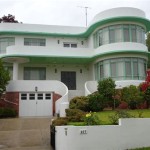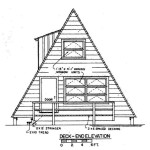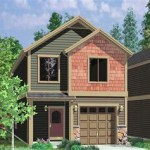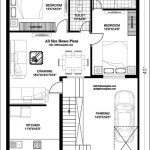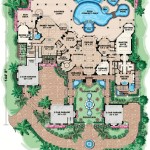A-Frame Tiny Home Plans: Exploring Efficiency and Aesthetics
A-frame tiny homes have experienced a resurgence in popularity, driven by their distinctive architectural appeal, structural simplicity, and perceived cost-effectiveness. These homes, characterized by their steeply angled roofs that extend to the foundation, offer a unique blend of rustic charm and modern functionality. A-frame structures are particularly well-suited for minimalist living and environmentally conscious individuals seeking a compact and sustainable housing solution. Choosing the right A-frame tiny home plan requires careful consideration of space optimization, material selection, local building codes, and individual lifestyle needs.
The appeal of A-frame tiny homes lies in their iconic shape, which evokes a sense of nostalgia and connection to nature. Their triangular form allows for efficient shedding of snow and rain, making them suitable for a variety of climates. Furthermore, the relatively simple construction process, compared to more complex architectural designs, can potentially reduce building costs and construction time. However, maximizing the usable space within an A-frame structure presents a unique set of challenges that necessitate thoughtful planning and innovative design solutions.
Key Considerations for Selecting A-Frame Tiny Home Plans
Before committing to a particular A-frame tiny home plan, it is essential to evaluate several critical factors. These considerations will influence the comfort, functionality, and long-term livability of the dwelling.
Space Optimization: One of the primary challenges of A-frame design is the limited headroom on the upper floors due to the sloping roofline. Careful attention should be paid to the placement of furniture, sleeping areas, and storage solutions to maximize the available vertical space. Loft spaces are commonly incorporated into A-frame tiny home designs to provide additional sleeping or storage areas. Consider the height of the loft and the accessibility via stairs or ladders. Plans should clearly indicate the internal dimensions and usable square footage, taking into account the sloping walls.
Efficient use of space is not only about minimizing wasted areas but also about strategically placing features. For example, integrating storage solutions into the walls or under the stairs can significantly increase the sense of spaciousness. Multi-functional furniture, such as sofa beds and fold-down tables, can further enhance the adaptability of the living area. Prioritize essential appliances and fixtures, and consider downsizing unnecessary items to create a decluttered and organized environment. The plan should incorporate strategies for natural lighting through strategically placed windows to brighten up the interior and create a more appealing living space.
Structural Integrity and Durability: Ensuring the structural integrity of an A-frame tiny home is paramount. The plans should provide detailed specifications for the foundation, framing, and roofing materials. It's imperative that the chosen materials are appropriate for the local climate and can withstand the elements. Consider factors such as wind resistance, snow load, and seismic activity when selecting materials and designing the structure. Consult with a qualified structural engineer to review the plans and ensure compliance with local building codes and safety regulations.
The foundation is the crucial base upon which the entire structure rests. A well-designed foundation will provide stability and prevent moisture intrusion. Options for A-frame tiny home foundations include concrete slabs, pier and beam systems, and mobile home chassis. The choice of foundation will depend on the soil conditions, budget constraints, and whether the home is intended to be stationary or mobile. The roofing system must be durable and weather-resistant to protect the interior from rain, snow, and sun. Common roofing materials for A-frame homes include asphalt shingles, metal roofing, and wood shakes. The plans should specify the appropriate roofing material for the climate and provide details for installation and flashing to prevent leaks.
Compliance with Local Building Codes: Before commencing construction, it is crucial to thoroughly research and understand the local building codes and zoning regulations. These regulations can vary significantly from one jurisdiction to another and may impact the size, location, and design of the A-frame tiny home. Failure to comply with these regulations can result in costly delays, fines, or even the demolition of the structure. Contact the local building department to obtain information on permit requirements, setback restrictions, and other applicable regulations. Ensure that the A-frame tiny home plans meet all relevant building codes, including those related to fire safety, electrical wiring, plumbing, and insulation.
The plans should be reviewed by a licensed architect or building inspector to ensure compliance with all applicable codes. This review can identify potential issues early on and prevent costly mistakes during construction. Be aware that some jurisdictions may have specific regulations regarding tiny homes, such as minimum square footage requirements or restrictions on the use of composting toilets. Adhering to these regulations is essential for obtaining the necessary permits and ensuring the long-term legality of the dwelling.
Analyzing Different A-Frame Tiny Home Plan Designs
A multitude of A-frame tiny home plans are available, ranging from simple, minimalist designs to more elaborate and luxurious options. Evaluating the different designs based on individual needs and preferences is critical for selecting the most suitable plan.
Single-Story vs. Two-Story A-Frames: Single-story A-frame tiny homes are characterized by their simplicity and ease of construction. These designs are typically more affordable to build and require less specialized skills. However, single-story A-frames offer limited floor space and may not be suitable for individuals or families who require more living area. Two-story A-frame tiny homes, on the other hand, provide significantly more living space by utilizing the vertical dimension. These designs often incorporate a loft area for sleeping or storage, thereby maximizing the usable square footage. Two-story A-frames typically require more complex construction and may be more expensive to build, but the added space can significantly enhance the comfort and functionality of the dwelling.
Consider the access to the loft area. Ladders can be a space-saving option, but may not be suitable for individuals with mobility issues. Stairs provide easier access to the loft, but they require more floor space. Some A-frame plans incorporate spiral staircases, which can be a visually appealing and space-efficient alternative to traditional stairs. The plans should clearly indicate the dimensions of the loft and the headroom available, ensuring that it is a comfortable and usable space.
Open-Concept vs. Partitioned Layouts: The interior layout of an A-frame tiny home can significantly impact the sense of spaciousness and functionality. Open-concept layouts, characterized by a lack of interior walls, create a more airy and open feeling. This design approach can be particularly beneficial in small spaces, as it eliminates visual barriers and allows natural light to flow freely throughout the dwelling. Partitioned layouts, on the other hand, divide the interior into separate rooms, providing more privacy and separation of functions. This design approach can be suitable for individuals or families who require dedicated spaces for sleeping, working, or entertaining.
When choosing between an open-concept and a partitioned layout, consider the individual lifestyle and needs. Open-concept layouts are often preferred by minimalist individuals or couples who value flexibility and simplicity. Partitioned layouts may be more suitable for families with children or individuals who work from home and require a dedicated workspace. It is possible to combine elements of both layouts, creating a semi-open plan that balances spaciousness with privacy.
Material Choices and Sustainability: The selection of building materials can significantly impact the environmental footprint and long-term durability of an A-frame tiny home. Sustainable building materials, such as reclaimed wood, bamboo flooring, and recycled insulation, can reduce the environmental impact of the construction process. Consider the embodied energy of the materials, which is the total energy required to extract, process, and transport them. Locally sourced materials can further reduce the carbon footprint of the project. The plans should specify the types of materials to be used and provide guidance on sustainable material selection.
Consider the thermal performance of the building envelope. High-quality insulation can significantly reduce energy consumption for heating and cooling, leading to lower utility bills and a more comfortable living environment. Options for insulation include fiberglass batts, spray foam, and rigid foam boards. The plans should specify the R-value of the insulation and provide details for proper installation. Passive solar design, which utilizes the sun's energy to heat and light the home, can further reduce energy consumption. This can be achieved by orienting the A-frame to maximize solar exposure and incorporating south-facing windows.
Modifying and Customizing A-Frame Tiny Home Plans
While pre-designed A-frame tiny home plans offer a convenient starting point, many individuals choose to modify or customize these plans to better suit their specific needs and preferences. Customization allows for the creation of a truly unique and personalized living space.
Adjusting Dimensions and Layout: One of the most common modifications to A-frame tiny home plans is adjusting the dimensions and layout of the structure. This may involve increasing or decreasing the overall size of the home, reconfiguring the interior layout, or adding or removing windows and doors. Before making any modifications, it is essential to consider the structural implications and ensure that the changes comply with local building codes.
Consult with a qualified architect or structural engineer to review the proposed modifications and ensure that they are structurally sound. Consider the impact of the changes on the overall aesthetic appeal of the A-frame. Maintaining the proportions and symmetry of the design is important for preserving the visual harmony of the structure. When adjusting the layout, consider the flow of traffic and the functionality of the different spaces. Ensure that the living area, kitchen, and bathroom are conveniently located and easily accessible.
Incorporating Unique Features: Customizing an A-frame tiny home plan provides the opportunity to incorporate unique features that reflect individual personality and lifestyle. These features may include custom-built furniture, built-in storage solutions, and unique architectural details. Consider incorporating elements that enhance the connection to nature, such as large windows, skylights, and outdoor living spaces.
Built-in furniture can maximize the usable space in a tiny home and create a sense of seamless integration. Consider building custom cabinets, shelves, and seating areas that are specifically designed to fit the dimensions of the A-frame. Outdoor living spaces, such as decks and patios, can extend the living area and provide a place to relax and enjoy the surrounding environment. Incorporating sustainable features, such as solar panels and rainwater harvesting systems, can reduce the environmental impact of the home and promote self-sufficiency.
Adding Off-Grid Capabilities: For individuals seeking a more self-sufficient and environmentally friendly lifestyle, adding off-grid capabilities to an A-frame tiny home can be an attractive option. This may involve installing solar panels to generate electricity, using a composting toilet to conserve water, and implementing a rainwater harvesting system to provide potable water. Before adding off-grid capabilities, it is essential to carefully assess the energy and water needs and select the appropriate technologies to meet those needs.
Consult with a qualified solar installer to determine the appropriate size and configuration of the solar panel system. Consider the climate and solar exposure when positioning the solar panels. Research different types of composting toilets and rainwater harvesting systems to select the most suitable options for the individual needs and budget. Ensure that the off-grid systems comply with local regulations and are properly maintained to ensure optimal performance.

12 Modern A Frame Cabin Plans Homes Tiny Houses Craft Mart

Pin Page

Top 10 A Frame House Plan Drawings For Builders 2024

How To Build This A Frame Cabin That Will Pay For Itself Hipcamp Journal

Tiny A Frame Cabin Diy Plans 12 X 18 Home Blueprint

A Frame House Plans Small Cabins Modern Luxury Designs

12 Modern A Frame Cabin Plans Homes Tiny Houses Craft Mart

24 X A Frame Cabin Plan Project Small House

Cozy Winter Cabins A Frame House Plans And More Houseplans Blog Com

Cool A Frame Tiny House Plans Plus Cabins And Sheds

